
Hoi An is a city near the mouth of Thu Bon River in Quang Nam Province in central Vietnam – even more widely known than the capital Tam Ky City itself. It faces the South China Sea to the east and is located just about 30 kilometers southeast of the center of Da Nang City.
Therefore, to get to Hoi An from Da Nang, you can simply book a taxi or a rental car. After a 45-minute drive, you will arrive in this lovely ancient city full of yellow-washed houses adorned by many colorful lanterns.
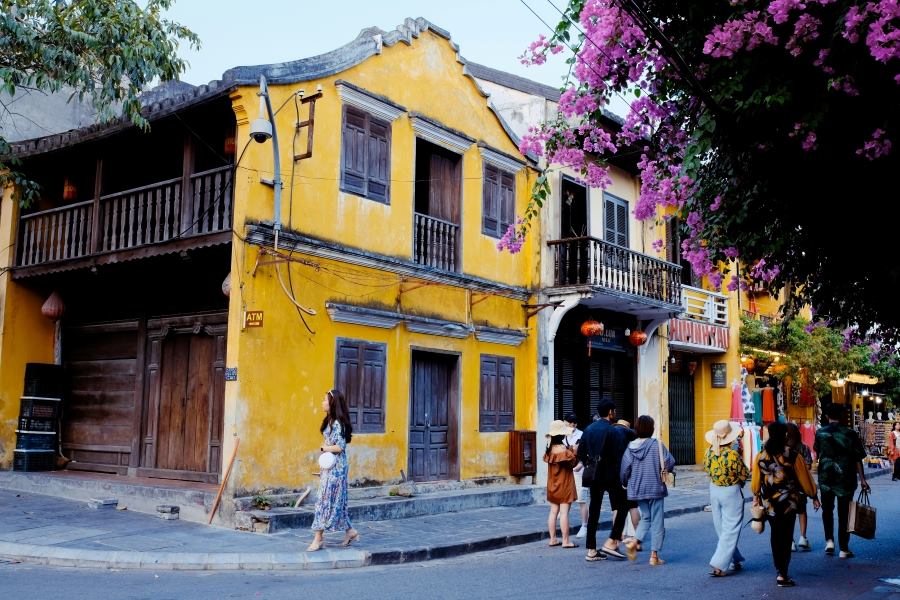
A corner of Hoi An Ancient Town with the distinctive yellow-washed houses (Source: @hieu309 via Unsplash)
Hoi An Ancient Town was recognized as a UNESCO World Heritage in 1999. Along with My Son Sanctuary in the same province, these two cultural heritages reflect the evolution of Quang Nam Province during two different periods in Vietnamese history.
While My Son dates from the 4th to 13th century and shows its spiritual origins to the Hinduism of India, Hoi An was a bustling business hub during the 16th - 19th century. The town is a unique blend of Vietnamese, Chinese, and Japanese influences – which can be clearly seen in its architecture, including houses, temples, and the famous Japanese Covered Bridge.
Its original street plan and way of life have also been remarkably preserved, as Hoi An avoided modern development and remains a living example of a traditional Asian trading port – thus earning its world heritage status.
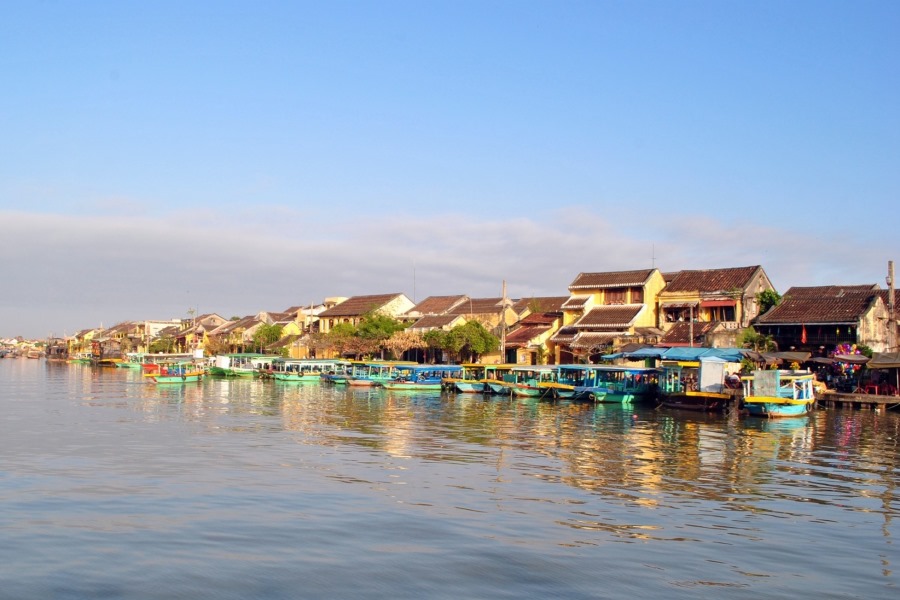
Hoi An Ancient Town with the boat wharf on Hoai River (Source: Hoi An Center for Cultural Heritage Management and Preservation)
Archaeological discovery of the Chinese Han Dynasty’s coins in Hoi An suggests international trade flourished here even more than 2000 years ago. It was a harbor for the Kingdom of Champa, with ships selling rice, seafood, wood, and even diamonds. The town also became a hub for high-quality handicrafts, exporting pottery, glassware, and other crafted items.
Hoi An was also a religious center where Hindus and Buddhists came for festivals and ceremonies, enriching the region's cultural diversity. However, this prosperity was challenged by frequent attacks from neighboring powers like the Khmer Empire and Dai Viet, hindering the town’s overall growth.

Pieces of ceramics found at Cu Lao Cham on the outskirts of Hoi An Ancient Town (Source: Hoi An Center for Cultural Heritage Management and Preservation)
In the late 16th century, the Nguyen lord Nguyen Hoang started to govern Dai Viet’s southernmost territories after being appointed by his brother-in-law – the Trinh lord Trinh Kiem.
He focused on promoting international trade with other countries in the world, making Hoi An one of Southeast Asia’s most busy harbors at that time. Nguyen Hoang also established many quarters for foreign traders, with certain rules to help them work smoothly.
The most prominent group was the Japanese traders who came to Southeast Asia by red-seal ships (Shuinsen) to buy China’s sugar, silk, and agarwood – goods that were banned from exporting to Japan by the Ming Dynasty. They set up their quarter with dozens of two and three-story wooden houses along the river bank.
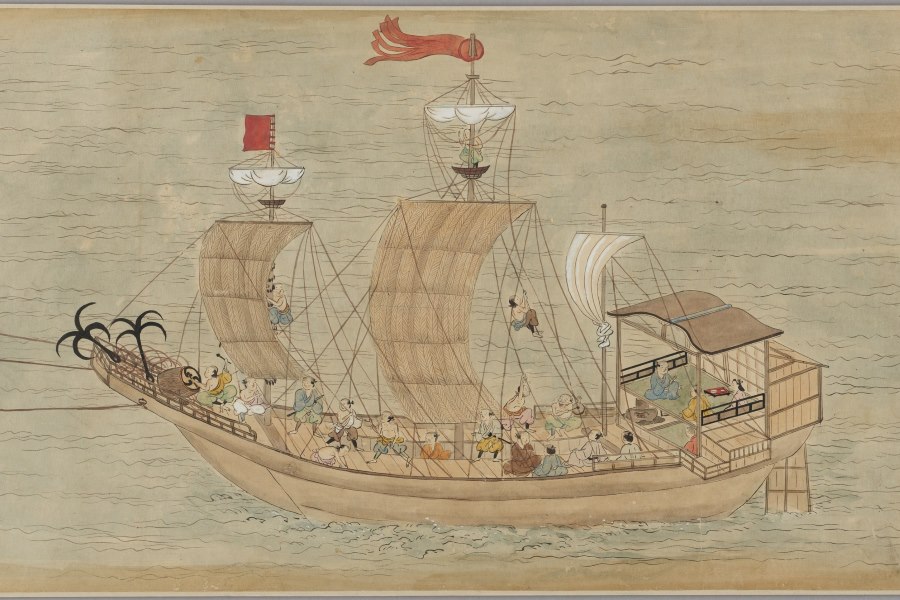
A Japanese red-seal ship on the way to Hoi An Ancient Town in the 18th century (Source: Kyushu National Museum)
However, during the late 17th century, due to the later Nguyen lords’ policy against Japanese Christians and the Tokugawa Shogunate’s “closed country policy”, the Japanese’s influence in Hoi An began to decrease.
Instead, the Chinese came to power. After the Ming-Qing transition, many of the Ming loyalists became refugees and migrated to Dai Viet. They married Vietnamese women and chose to reside in Hoi An, slowly replacing the once Japanese quarter along the river bank. The business wasn’t as lively as before, but the ships from Cambodia, Thailand, Indonesia, and Japan still frequented.

The once Japanese quarter along the river bank in Hoi An Ancient Town during the 18th century (Source: Kyushu National Museum)
In the 1770s, the Trinh – Nguyen War entered the most critical period. The Trinh force occupied Hoi An and tore down all the commercial areas, leaving only religious buildings intact. Meanwhile, the Nguyen lords and the major Chinese traders fled further down south to what is now Ho Chi Minh City. Hoi An was left in ruins.
Hoi An lost its status as a business hub even more when sediments made the Thu Bon River’s mouth Cua Dai narrower and blocked the Co Co River in the 19th century, preventing big ships from getting in the harbor. The movement to sea transport and the Nguyen Dynasty’s closing of the border to foreigners also contributed to this trading port’s downfall.
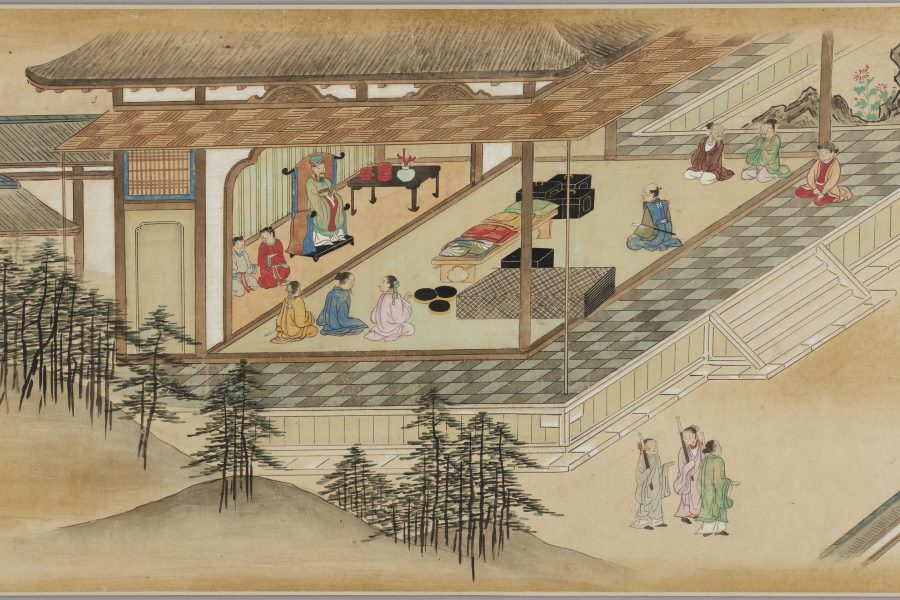
A prince of Nguyen Dynasty welcomed the Japanese ship to Hoi An Ancient Town during the 18th century - supposedly (Source: Kyushu National Museum)
Although Hoi An ceased to develop as a key commercial center, it was still a trading town until the 20th century and served as the capital of the former Quang Nam Province (before 1975).
In 1976, the then Quang Nam Province and Da Nang City were merged into Quang Nam – Da Nang Province with Da Nang City as the capital. Hoi An again became somewhat of a “forgotten” city. However, the state of being “forgotten” helped Hoi An avoid the negative impacts of modernization and retain most of its traditional architecture and way of life.
In the 1980s, Hoi An began to receive a lot of public attention from scholars all over the world. And after being recognized as a UNESCO World Heritage in 1999, the ancient city is gradually getting lively again with tourism, often listed among Vietnam’s top destinations over the years.

Tran Phu Street in Hoi An Ancient Town in 1992 (Source: Hoi An Center for Cultural Heritage Management and Preservation)
You may like: Signature foods in Hoi An
Located at number 101 Nguyen Thai Hoc Street, Minh An Ward, Tan Ky Old House is considered the oldest and also the most beautiful residential building in Hoi An.
Built in 1741, the house has been home to seven generations of the Lee family. Originally used for trading agricultural goods, its facing Hoai River at the back proved convenient. Despite enduring floods, most notably in 1964, the house has remarkably survived.

The front of Tan Ky Old House in Hoi An Ancient Town (Source: Vietnam Times)
The architecture of Tan Ky Old House blends Chinese, Japanese, and Vietnamese styles. Unique features include double overlapping columns symbolizing the heaven-human relationship, five vertical columns representing the five elements of nature, and a light-providing atrium despite the lack of windows.
Wood is the primary building material, complemented by stones from Thanh Hoa Province for pillar protection and floor tiles from Bat Trang Village for temperature regulation. Interestingly, the house was constructed entirely without nails, yet remains structurally sound for over 250 years.
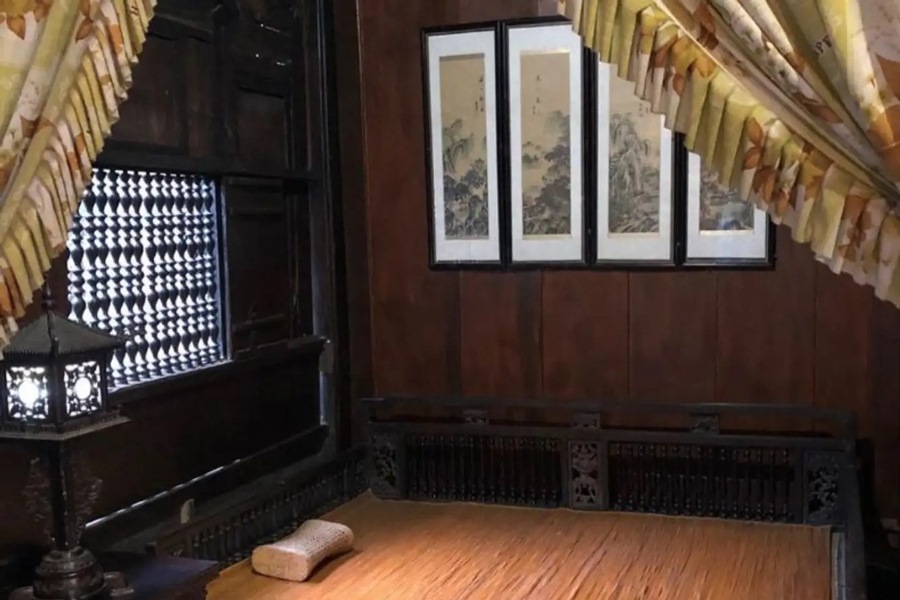
A corner inside Tan Ky Old House in Hoi An Ancient Town (Source: @chikastagram_o2o2 via Instagram)
Also located in Minh An Ward, the Japanese Covered Bridge connects Tran Phu Street (then the Chinese quarter) to the east and Nguyen Thi Minh Khai Street (then the Japanese quarter) to the west.
Built with the assistance of Japanese merchants in the 17th century, the bridge is a typical example of the “thuong gia ha kieu” (covered bridge) style. While people walk on the bridge to pass the other side of the river, they can also visit the temple where the water god Bac De Tran Vu is worshiped.
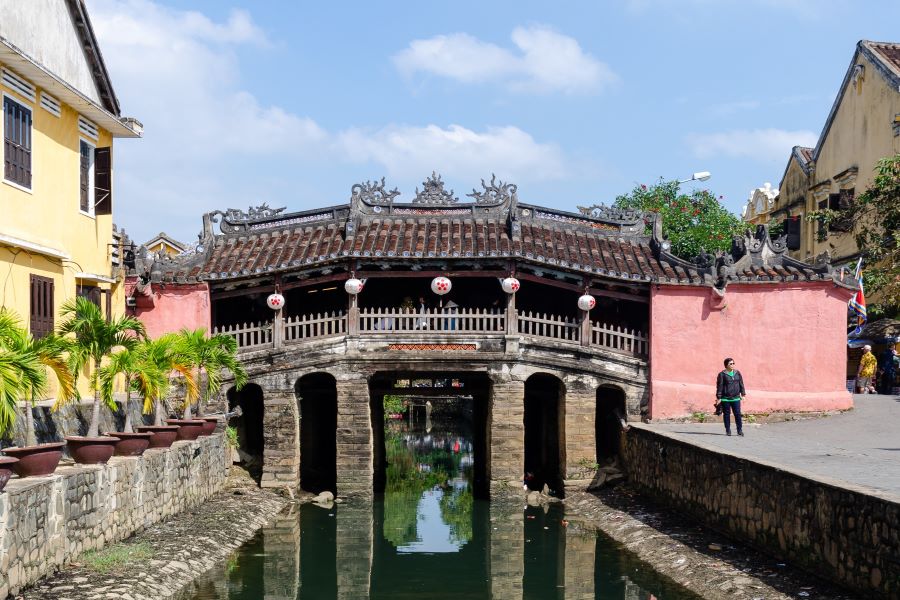
The Japanese Covered Bridge in Hoi An Ancient Town in 2020 (Source: @carschten via Wikimedia Commons)
But despite its Japanese involvement, the bridge's features again combine many influences. Red lacquered wood and stone form the main structure – which is pretty much in Chinese style, while the curved roof shows an image of a Japanese traditional house. Yin-yang titles decorate the roof, adding a Vietnamese touch.
Interestingly, dog and monkey statues guard the bridge's entrance and exit, symbolizing protection and potentially reflecting the years construction began and finished. And do you know that the Japanese Covered Bridge is featured on Vietnam’s VND 20,000 banknote?
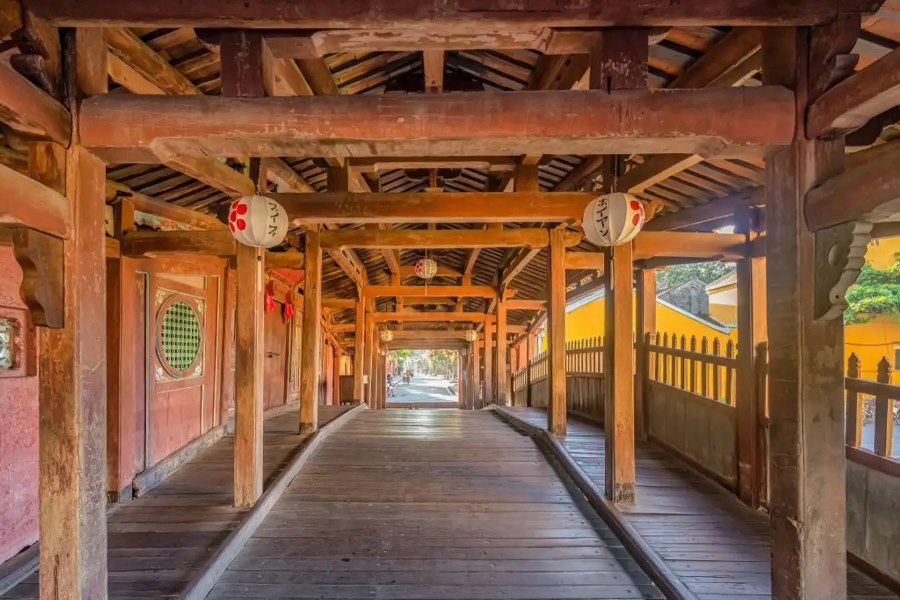
The interior of the Japanese Covered Bridge in Hoi An Ancient Town in 2020 (Source: Shutterstock)
Based at 46 Tran Phu Street, the Fujian Assembly Hall is just a 7-minute walk from the famous Japanese Covered Bridge.
The hall was built in 1697 by Chinese immigrants who fled the collapse of the Ming Dynasty in China – primarily from Fujian Province. The hall then served as a central location for the Chinese community to gather and facilitate trade activities with the permission of the ruling Nguyen Dynasty in Vietnam.
Overall, the hall follows a traditional Chinese architectural layout of a symmetrical building, stretching from Tran Phu Street to Phan Chu Trinh Street.
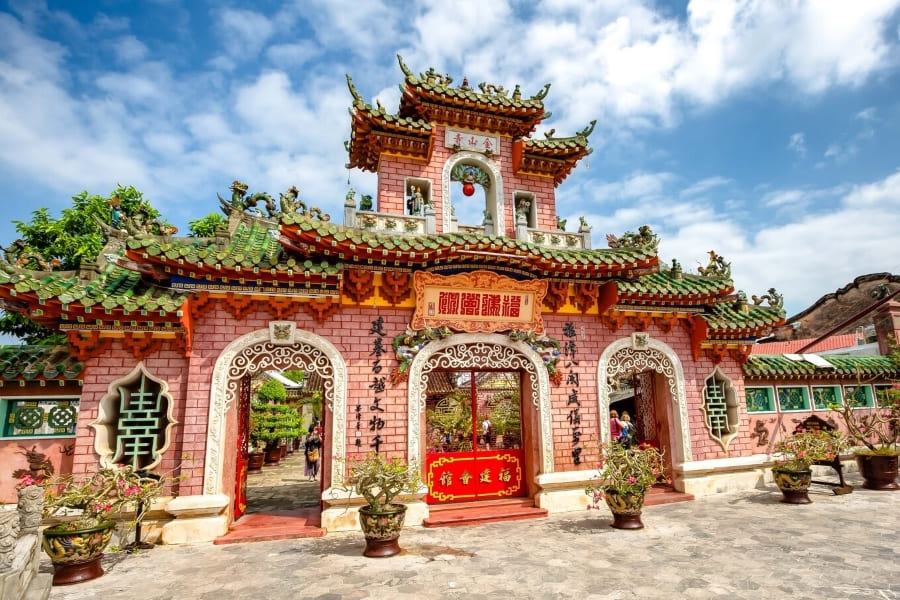
The grand entrance to the Fujian Assembly Hall in Hoi An Ancient Town (Source: Josh Ellis Photography)
The journey begins at the grand entrance (tam quan), adorned with porcelain tiles and a symbolic yin-yang roof. Three passageways represent heaven, earth, and humanity, with the central door reserved for special occasions to prevent misfortune.
As you enter, a front yard unfolds, showcasing a miniature landscape with a special dragon carp statue. A tiny replica of the Great Wall stands nearby, flanked by images of four sacred animals: dragon, unicorn, turtle, and phoenix. These elements create a sense of harmony and respect for tradition.
Beyond this courtyard lie further sections, including eastern and western wings, a sanctuary, a backyard, and a final rear area.
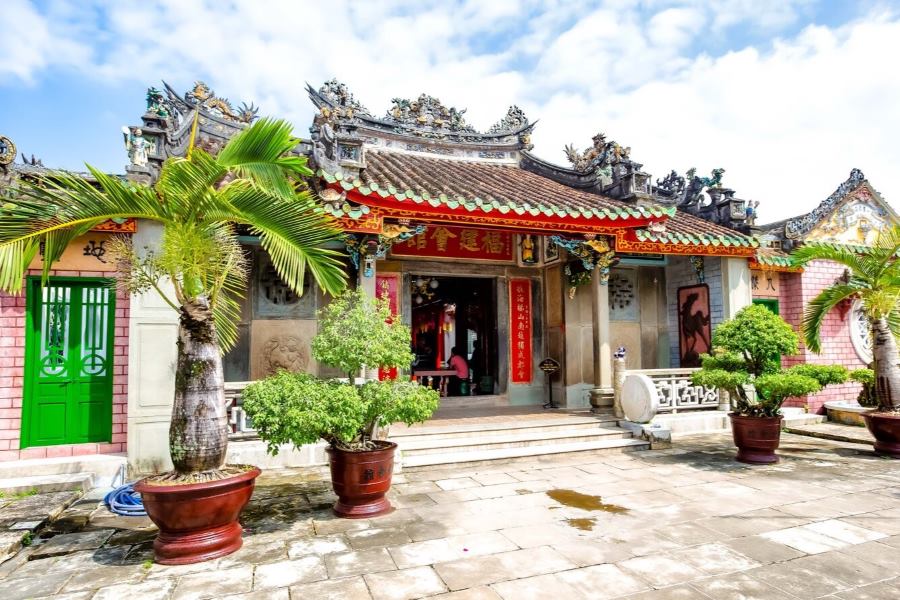
The main building inside the Fujian Assembly Hall in Hoi An Ancient Town (Source: Josh Ellis Photography)
Besides being a top destination for tourists in Central Vietnam, Hoi An Ancient Town brings a brand-new perspective into Vietnamese history and architecture with its distinctive fusion of the three cultures in East Asia: Vietnam, China, and Japan.
The unexpected meet during the flow of history enabled Hoi An to thrive as a bustling business hub during the 16th-19th century. However, that didn’t last long, as Hoi An became an abandoned city as a result of constant conflicts in Vietnam at the time.
Luckily, the very history itself kept Hoi An from the hustle and bustle of modern life, leaving us with a world heritage to further explore Vietnam’s beauty.
You may like: Hoi An Itinerary: 3 Perfect Days in Lantern Town